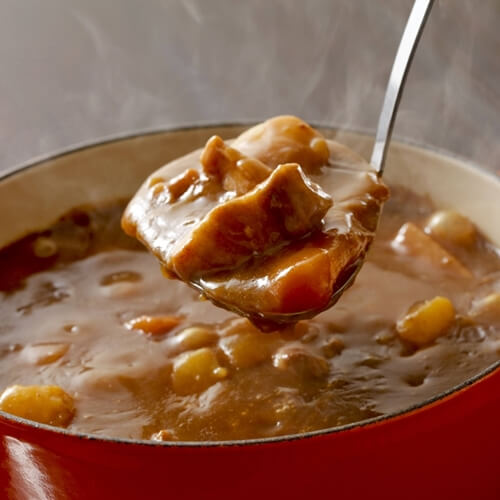How To Cook With A Dutch Oven

For many people, camping is marked by roasting s’mores over a fire, hiking among rustic trails and sleeping out amid the stars. Others see camping as a time to enjoy cooking with a dutch oven. A method that dates back hundreds of years, dutch ovens involve a cast iron or clay pot that are placed over fire pits or charcoal to cook various dishes. You don’t have to be in the great outdoors to enjoy cooking with a dutch oven, and many models work with modern stoves or even backyard grills. So, if you’re looking for a little slice of camping from the comfort of your own kitchen, here are some tasty tips:
A proper curing
Before you ever cook with your dutch oven it needs to be cured. This process will prevent your oven from rusting, which will help ensure the quality of subsequent meals and make it much easier to clean. To begin, take some fine-grade sandpaper and scrub the interior of the pot; this will help loosen up the molecules and open the pores. From there, wash the inside with hot soapy water, which will remove the waxing coating. Once dry, put the dutch oven on your stovetop and let it heat up to 200 degrees Fahrenheit for an hour or so. As it’s heating up, put either shortening or linseed oil inside the pot, using heat-resistant gloves and a rag to spread the substance throughout the entire pot. Once coated, crank your regular oven up to 350 degrees Fahrenheit and place the pot inside for another hour. When the pot cools down, it’ll be fully protected and ready for cooking.
Remain vigilant
One of the reasons people love cooking with dutch ovens is because it’s a slow process that lets them control the heat and temperature. However, part of that means that you’ll need to keep an especially watchful eye on the pot itself to maintain proper control. Among the things you’ll want to watch out for, steam can indicate that the pot isn’t properly sealed or there is simply too much heat being generated. To fix this, remove the lid and re-seal it. If that doesn’t help, take out a few coals to help reduce the overall temperature.
Common equipment
In addition to the actual dutch oven, you’ll need a few accessories to aid your cooking. Some of the more necessary pieces of equipment are:
- Tongs
- Matches
- Drain pain
- Oven mitts
- Lid lifter
- Charcoal briquettes
A word on woods
When cooking with dutch ovens, the kind of wood you end up choosing has a major impact on the length of cooking time and the food’s final quality. As a rule, you want to use hardwoods, which result in coals that are both much hotter and far longer lasting. There are a number of different kinds of hardwood trees to consider, including:
- Ash
- Birch
- Brazilian walnut
- Elm
- Hickory
- Mahogany
- Sandalwood
- Willow
Charcoal 101
Whether you’re cooking with a dutch oven, even on a kitchen stovetop, coals are your best friend. However, as noted above, too many coals can throw off the overall cooking process. As such, you’ll want to ensure you fill the actual lid of the with the right amount of coals in the first place. Generally speaking, you want to make sure that at least half of the lid is covered with charcoal, though some chefs may go as high as two-thirds full. You want to leave at least some space on the actual lid not only to avoid over-cooking the food but also to keep the pot’s cool down process to a more reasonable span of time.
Practice dutch oven cook by enrolling in culinary academy.


